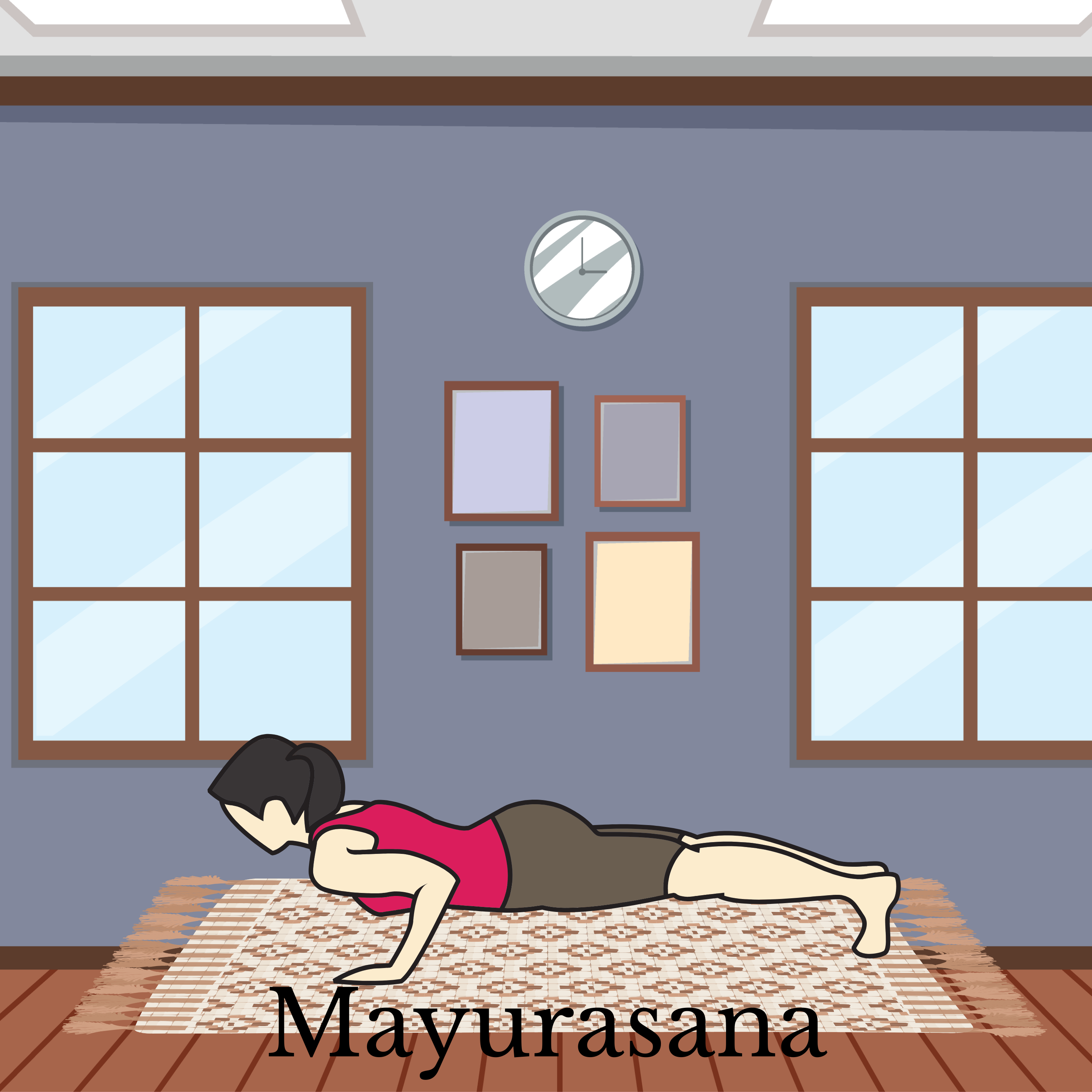The Beauty of Mayur Asana
Yoga is a timeless practice that unites strength, balance, flexibility, and mindfulness. Among the more advanced postures, Mayur Asana (Peacock Pose) stands out as a symbol of power and grace.
Named after the peacock (Mayur in Sanskrit), this posture not only tests physical endurance but also ignites inner energy. Practiced with dedication, Mayur Asana is believed to detoxify the body, improve digestion, strengthen the arms and core, and promote balance.
While this pose may appear challenging at first, it offers immense rewards for those who approach it with patience and practice.
The Meaning Behind Mayur Asana
-
Mayur – Peacock
-
Asana – Pose/Posture
The peacock, a majestic bird, symbolizes beauty, strength, and vibrancy. Similarly, Mayur Asana reflects strength, inner purity, and resilience. In traditional yoga texts, this pose is even described as a way to cleanse the body of toxins and rejuvenate life force energy.
Step-by-Step Guide: How to Practice Mayur Asana
Because Mayur Asana requires balance and strength, warm up your wrists, core, and shoulders before attempting it.
Step 1: Starting Position
-
Kneel on the floor with knees slightly apart.
-
Place your palms flat on the ground with fingers pointing toward your feet (reverse hand placement).
Step 2: Arm Placement
-
Bend your elbows and position them close to your abdomen.
-
The elbows should gently press into the navel region for support.
Step 3: Align the Body
-
Lean forward, shifting weight onto the arms.
-
Stretch your legs straight back, keeping them together and parallel to the floor.
Step 4: Lift into Balance
-
Gradually lift your feet off the floor.
-
Keep the body parallel to the ground, supported by your palms and core strength.
Step 5: Hold the Pose
-
Maintain balance by focusing your gaze forward.
-
Hold for 10–30 seconds initially, extending duration with practice.
Step 6: Release Safely
-
Slowly lower your feet to the floor.
-
Rest in Child’s Pose (Balasana) for recovery.
Benefits of Mayur Asana
Mayur Asana is a powerhouse pose with physical, mental, and energetic benefits.
1. Physical Benefits
-
Strengthens Arms & Wrists 💪
The pose builds incredible strength in the arms, wrists, and shoulders. -
Improves Digestion 🍽️
Pressure on the abdomen stimulates digestive organs, aiding metabolism and toxin release. -
Tones Core Muscles ⚡
Engages abdominal and lower back muscles, promoting stability and strength. -
Enhances Balance 🧘♂️
Requires full-body coordination, sharpening physical control and balance. -
Boosts Flexibility 🌀
Stretches and conditions the wrists, elbows, and shoulders.
2. Mental & Emotional Benefits
-
Builds Confidence 🌟
Overcoming the challenge of balancing builds self-belief and determination. -
Improves Focus 🎯
Maintaining balance demands concentration, enhancing mental clarity. -
Relieves Stress 🌿
Like many yoga postures, deep breathing during Mayur Asana calms the nervous system.
3. Energetic Benefits
In Ayurveda and yogic philosophy, Mayur Asana is said to stimulate digestive fire (Agni) and purify the energy channels (Nadis), leaving practitioners refreshed and energized.
Precautions & Contraindications
While Mayur Asana is powerful, it should be practiced mindfully:
-
❌ Avoid if you have wrist, elbow, or shoulder injuries.
-
❌ Not recommended for those with hernia, ulcers, or severe digestive issues.
-
❌ Pregnant women should not attempt this pose.
-
❌ People with high blood pressure or heart problems should avoid.
-
❌ Beginners should practice under a yoga instructor’s guidance.
👉 Always listen to your body and avoid forcing the posture.
Modifications & Variations
Yoga adapts to every body type. Beginners can try:
-
Using a Yoga Block: Place a block under the chest for partial support.
-
Bent Knees Variation: Keep knees bent instead of fully extending legs.
-
Wall Support: Practice near a wall for stability.
-
Advanced Version: Once comfortable, try lifting the legs higher into a more elevated position.
Mayur Asana in Daily Life
This posture is particularly useful in modern lifestyles:
-
For office workers, it strengthens arms and improves posture weakened by desk jobs.
-
For students, it enhances focus and determination.
-
For those with digestive sluggishness, it stimulates metabolism and relieves bloating.
Even practicing the preparatory steps (arm strength, core conditioning, and wrist mobility) can bring health benefits, making it a versatile practice for anyone seeking holistic wellness.
Final Thoughts: The Grace of the Peacock
Mayur Asana is more than just a yoga posture—it’s a test of physical power and mental resilience. By balancing the body on the arms, practitioners unlock strength, inner confidence, and vitality.
Whether your goal is to:
-
Strengthen arms 💪
-
Improve digestion 🌿
-
Or boost focus and resilience 🎯
…this pose offers a transformative journey.
Like the peacock spreading its vibrant feathers, Mayur Asana teaches us to embrace our strength, beauty, and inner radiance. Approach it with patience, and it may become one of the most rewarding milestones in your yoga practice.

